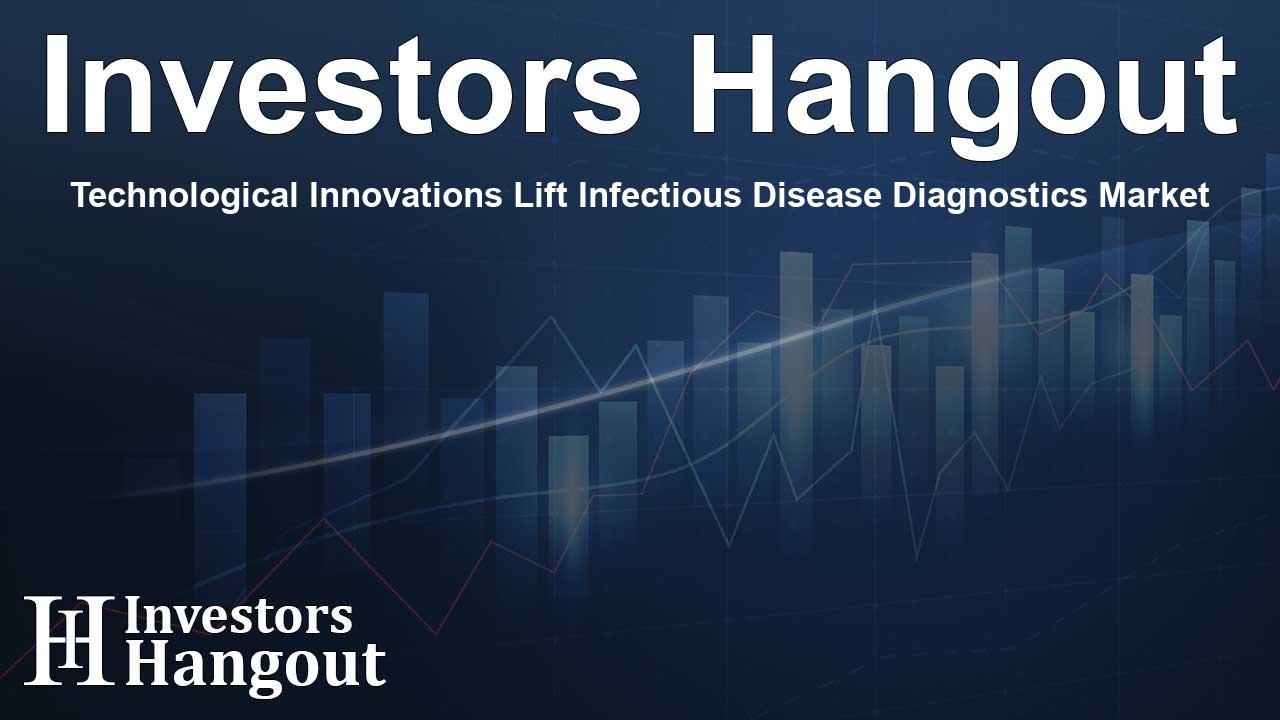Technological Innovations Lift Infectious Disease Diagnostics Market

Growth of the Infectious Disease Diagnostics Market
The infectious disease diagnostics market is on a significant upward trajectory, projected to reach approximately USD 59.95 million by 2030. This growth is fueled by remarkable technological advancements and the rising prevalence of infectious diseases. The market, which was valued at USD 38.36 million in 2022, is expected to grow at a compound annual growth rate (CAGR) of 5.7% from 2022 to 2030.
Market Analysis and Insights
A comprehensive report provides an in-depth analysis of the infectious disease diagnostics market, including trends and growth opportunities. The market is segmented based on various parameters such as products, technologies, application types, testing types, and end users. This segmented approach helps identify key areas for growth and investment.
Key Market Drivers
The infectious disease diagnostics market is largely driven by several key factors. One primary driver is the technological innovations that have transformed diagnostic tools and techniques. These advancements have made it possible to carry out more precise diagnostic tests, ensuring timely and appropriate treatment for patients. The rise in the number of infectious diseases globally also propels demand for effective diagnostic solutions.
Impact of Technology on Diagnostics
The emergence of new technologies, particularly molecular diagnostics such as polymerase chain reaction (PCR), has revolutionized the field. These technologies enable quicker and more accurate detection of pathogens, thereby improving patient management. For instance, point-of-care testing is becoming increasingly crucial as it allows immediate diagnostic results in various settings.
Major Players in the Market
Several prominent companies are leading the infectious disease diagnostics market. Key players include bioMerieux SA, DiaSorin SpA, Bio-Rad Laboratories, Danaher Corp, Trinity Biotech, and F. Hoffmann-La Roche Ltd. These companies are continually innovating and enhancing their product offerings to meet the growing market demand.
Emerging Trends
Current trends in the market include increasing focus on rapid diagnostics and wearable health devices, which are shaping how healthcare providers approach infectious disease testing. Furthermore, the rise of antimicrobial resistance (AMR) is prompting further investment in diagnostics that can identify resistance patterns swiftly.
Market Segmentation Insights
The infectious disease diagnostics market can be segmented into various categories:
- By Product: The market includes segments for kits and reagents, instruments, and software and services. Kits and reagents currently hold the largest market share.
- By Technology: This includes segments for biosensor-based, immunodiagnostics, and molecular-based diagnostics, among others, with molecular diagnostics projected to grow fastest.
- By Application: The market is segmented into point-of-care testing and laboratory testing, with laboratory testing holding a larger share.
- By Testing Type: Segmented into human and veterinary testing, with human testing leading.
- By End User: The major end users are diagnostic laboratories, hospitals and clinics, and research institutes.
Conclusion on Market Prospects
The outlook for the infectious disease diagnostics market is notably positive. Given the alarming global rise in infectious diseases, effective diagnostic audits are essential. Moreover, the COVID-19 pandemic has underscored the critical importance of rapid and accurate diagnostics, prompting increased funding and focus on research and development in this domain. Future advancements in diagnostic technology will likely continue to play a significant role in transforming the healthcare landscape, enhancing public health preparedness and response capabilities.
Frequently Asked Questions
What is the projected market size of the infectious disease diagnostics market by 2030?
The infectious disease diagnostics market is expected to reach USD 59.95 million by 2030.
What factors are driving the growth of this market?
The growth is driven by technological advancements and the increasing prevalence of infectious diseases.
Who are the key players in the infectious disease diagnostics market?
Major companies include bioMerieux SA, DiaSorin SpA, Bio-Rad Laboratories, among others.
What technologies are influencing diagnostics in this market?
Molecular diagnostics, PCR testing, and point-of-care testing technologies are significantly impacting the market.
How does increasing antimicrobial resistance affect the diagnostics market?
The rise in antimicrobial resistance heightens the demand for effective diagnostics to identify resistance patterns in infectious pathogens.
About The Author
Contact Dominic Sanders privately here. Or send an email with ATTN: Dominic Sanders as the subject to contact@investorshangout.com.
About Investors Hangout
Investors Hangout is a leading online stock forum for financial discussion and learning, offering a wide range of free tools and resources. It draws in traders of all levels, who exchange market knowledge, investigate trading tactics, and keep an eye on industry developments in real time. Featuring financial articles, stock message boards, quotes, charts, company profiles, and live news updates. Through cooperative learning and a wealth of informational resources, it helps users from novices creating their first portfolios to experts honing their techniques. Join Investors Hangout today: https://investorshangout.com/
The content of this article is based on factual, publicly available information and does not represent legal, financial, or investment advice. Investors Hangout does not offer financial advice, and the author is not a licensed financial advisor. Consult a qualified advisor before making any financial or investment decisions based on this article. This article should not be considered advice to purchase, sell, or hold any securities or other investments. If any of the material provided here is inaccurate, please contact us for corrections.
